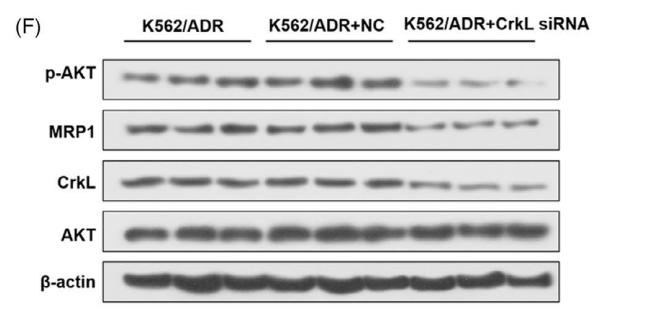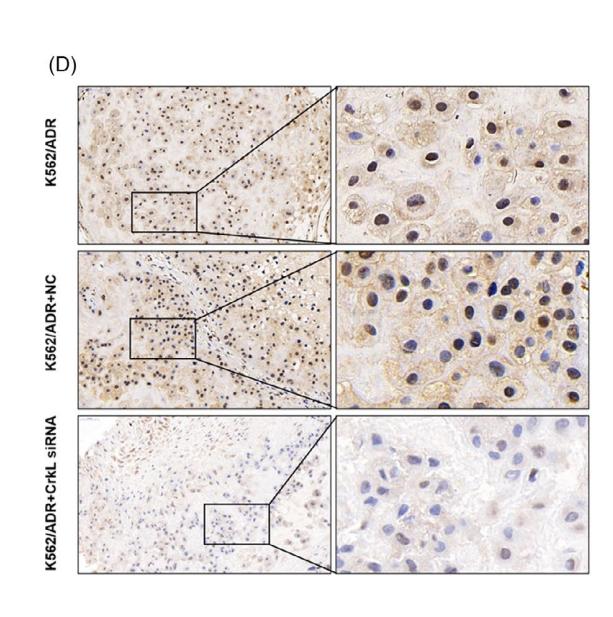CrkL Antibody - #AF7805
| 製品: | CrkL Antibody |
| カタログ: | AF7805 |
| タンパク質の説明: | Rabbit polyclonal antibody to CrkL |
| アプリケーション: | WB |
| Cited expt.: | WB |
| 反応性: | Human, Mouse, Rat, Monkey |
| 予測: | Pig, Zebrafish, Bovine, Horse, Sheep, Rabbit, Dog, Chicken, Xenopus |
| 分子量: | 39kDa; 34kD(Calculated). |
| ユニプロット: | P46109 |
| RRID: | AB_2844169 |
製品説明
*The optimal dilutions should be determined by the end user. For optimal experimental results, antibody reuse is not recommended.
*Tips:
WB: For western blot detection of denatured protein samples. IHC: For immunohistochemical detection of paraffin sections (IHC-p) or frozen sections (IHC-f) of tissue samples. IF/ICC: For immunofluorescence detection of cell samples. ELISA(peptide): For ELISA detection of antigenic peptide.
引用形式: Affinity Biosciences Cat# AF7805, RRID:AB_2844169.
折りたたみ/展開
Crk L; Crk like protein; Crk-like protein; Crkl; CRKL_HUMAN; Crkol; HGNC:2363; Oncogene CrkL; V crk avian sarcoma virus CT10 oncogene homolog like; v crk sarcoma virus CT10 oncogene homolog (avian) like; V crk sarcoma virus CT10 oncogene homolog avian like;
免疫原
A synthesized peptide derived from human CrkL, corresponding to a region within the internal amino acids.
- P46109 CRKL_HUMAN:
- Protein BLAST With
- NCBI/
- ExPASy/
- Uniprot
MSSARFDSSDRSAWYMGPVSRQEAQTRLQGQRHGMFLVRDSSTCPGDYVLSVSENSRVSHYIINSLPNRRFKIGDQEFDHLPALLEFYKIHYLDTTTLIEPAPRYPSPPMGSVSAPNLPTAEDNLEYVRTLYDFPGNDAEDLPFKKGEILVIIEKPEEQWWSARNKDGRVGMIPVPYVEKLVRSSPHGKHGNRNSNSYGIPEPAHAYAQPQTTTPLPAVSGSPGAAITPLPSTQNGPVFAKAIQKRVPCAYDKTALALEVGDIVKVTRMNINGQWEGEVNGRKGLFPFTHVKIFDPQNPDENE
種類予測
Score>80(red) has high confidence and is suggested to be used for WB detection. *The prediction model is mainly based on the alignment of immunogen sequences, the results are for reference only, not as the basis of quality assurance.
High(score>80) Medium(80>score>50) Low(score<50) No confidence
研究背景
May mediate the transduction of intracellular signals.
Belongs to the CRK family.
研究領域
· Cellular Processes > Cellular community - eukaryotes > Focal adhesion. (View pathway)
· Cellular Processes > Cell motility > Regulation of actin cytoskeleton. (View pathway)
· Environmental Information Processing > Signal transduction > MAPK signaling pathway. (View pathway)
· Environmental Information Processing > Signal transduction > ErbB signaling pathway. (View pathway)
· Environmental Information Processing > Signal transduction > Rap1 signaling pathway. (View pathway)
· Human Diseases > Infectious diseases: Bacterial > Bacterial invasion of epithelial cells.
· Human Diseases > Infectious diseases: Bacterial > Shigellosis.
· Human Diseases > Cancers: Overview > Pathways in cancer. (View pathway)
· Human Diseases > Cancers: Overview > MicroRNAs in cancer.
· Human Diseases > Cancers: Specific types > Renal cell carcinoma. (View pathway)
· Human Diseases > Cancers: Specific types > Chronic myeloid leukemia. (View pathway)
· Organismal Systems > Immune system > Chemokine signaling pathway. (View pathway)
· Organismal Systems > Immune system > Fc gamma R-mediated phagocytosis. (View pathway)
· Organismal Systems > Nervous system > Neurotrophin signaling pathway. (View pathway)
· Organismal Systems > Endocrine system > Insulin signaling pathway. (View pathway)
参考文献
Application: WB Species: Human Sample: K562 cells
Application: WB Species: Human Sample: K562/ADR cells
Application: IHC Species: Human Sample: K562/ADR cells
Restrictive clause
Affinity Biosciences tests all products strictly. Citations are provided as a resource for additional applications that have not been validated by Affinity Biosciences. Please choose the appropriate format for each application and consult Materials and Methods sections for additional details about the use of any product in these publications.
For Research Use Only.
Not for use in diagnostic or therapeutic procedures. Not for resale. Not for distribution without written consent. Affinity Biosciences will not be held responsible for patent infringement or other violations that may occur with the use of our products. Affinity Biosciences, Affinity Biosciences Logo and all other trademarks are the property of Affinity Biosciences LTD.




